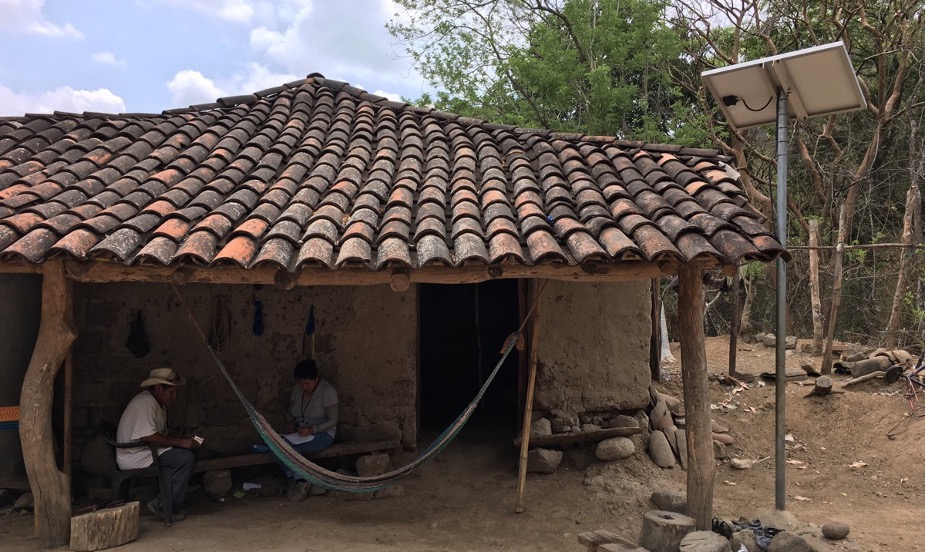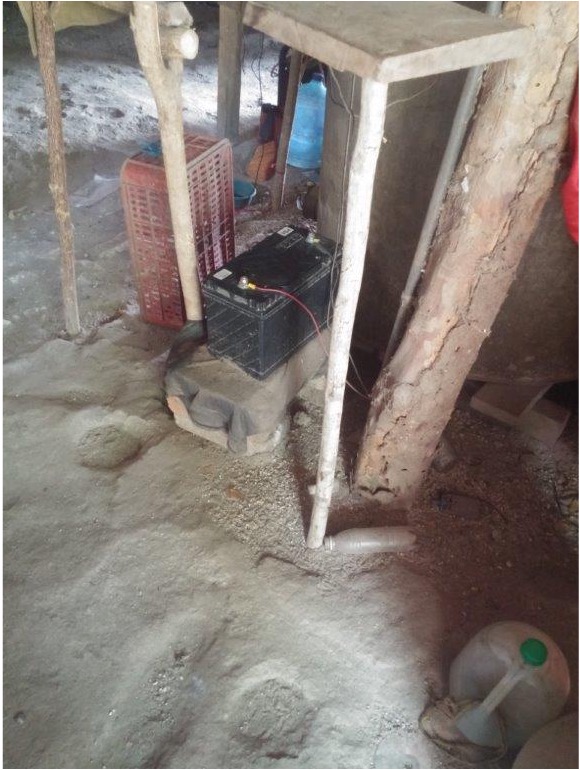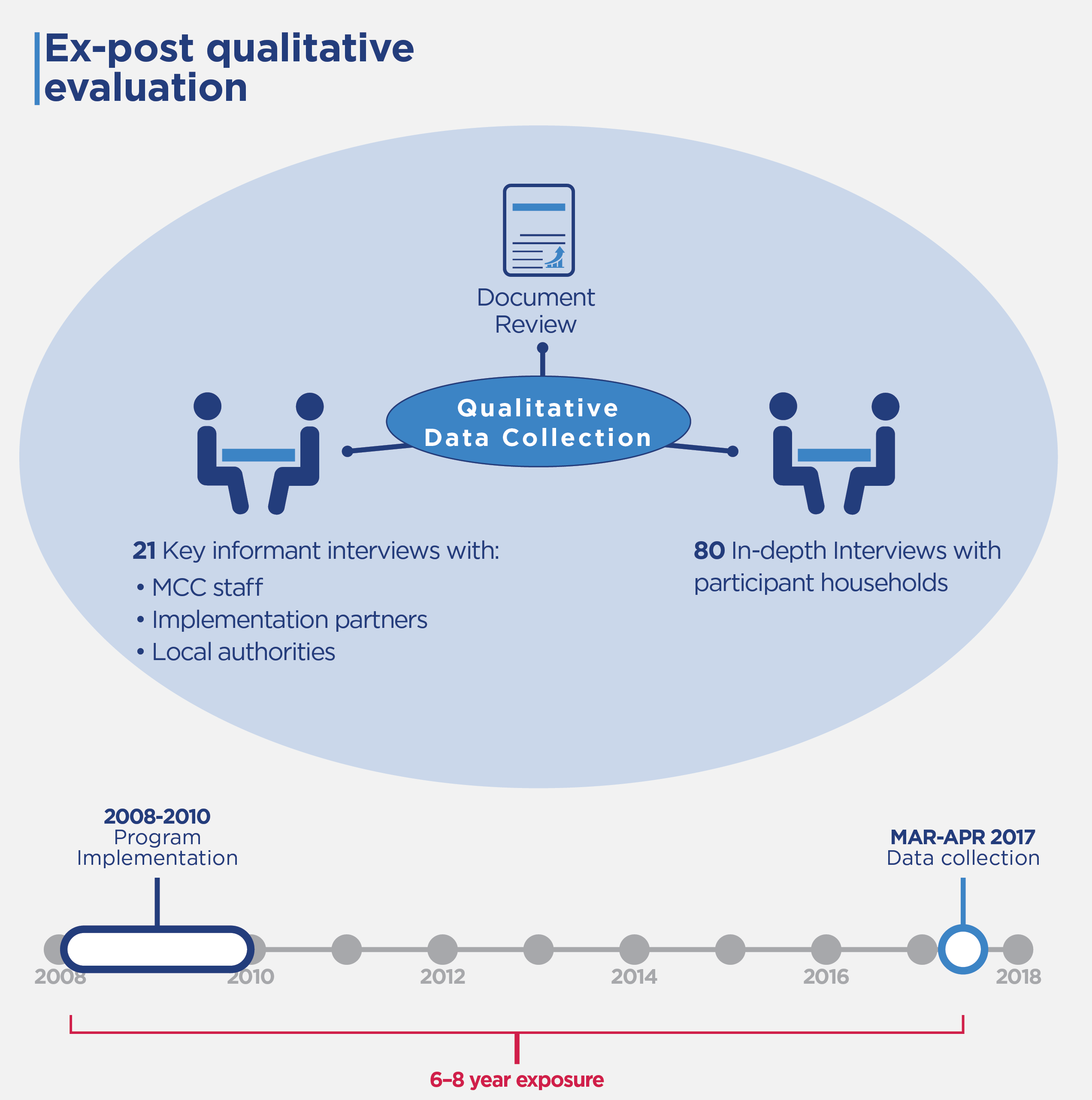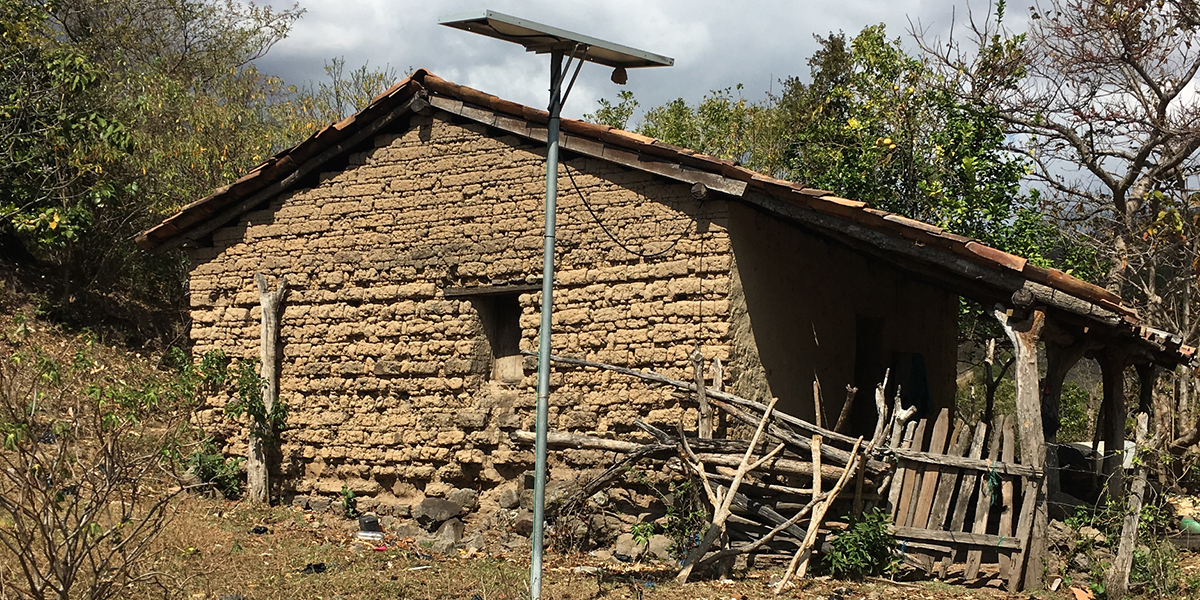Program Overview
MCC’s $449.6 million El Salvador Compact (2007—2012) funded the $30 million Rural Electrification Sub-Activity, which included the $2 million Solar Panel Component to provide solar electricity to address energy needs where electrical grid extensions were not economically viable. The Solar Panel Component was built on the theory that providing solar electricity reduces use of alternative energy sources, in turn decreasing indoor air pollution, increasing leisure time, and improving children’s performance at school, all of which can help increase households’ health, economic productivity, and incomes.
Evaluator Description
MCC commissioned Social Impact to conduct a final independent performance evaluation of the Rural Electrification Sub-Activity Solar Panel Component. Full report results and learning: https://data.mcc.gov/evaluations/index.php/catalog/189.
Key Findings
Implementation
- The program supplied 1,950 solar panels, 105 percent more than originally planned because of cost savings.
Energy Consumption and Air Quality
- Interviewed households reported using less kerosene, wood and candles, and half reported completely discontinuing using original lighting sources.
- Nearly 90 percent of interviewed households reported that air quality in their homes greatly improved.
Time Allocation
Sustainability
Evaluation Questions
This final evaluation was designed to answer to what extent the Solar Panel Component of the Rural Electrification Sub-Activity:
- 1
Was implemented according to plan? - 2
Changed energy consumption patterns? - 3
Improved air quality? - 4
Affected household time allocation? - 5
Was sustainable?
Detailed Findings
Implementation

Solar panel installed outside a rural household
The installation of the initial 950 systems took place in three phases from 2008–2009 and occurred within the originally designated timeframe and budgets. In fact, program documents indicated that installations ran more than a year ahead of schedule and the contractors’ performance was satisfactory. With the objective of installing 950 solar panels in total, the program ultimately surpassed its target in supplying 1,950 solar panels. Various interviews noted that the reduction in costs was attributable to economies of scale as well as efficiencies obtained during installation and logistics, leading to a 50 percent reduction in the price of each solar panel installed.
The Solar Panel Component did not specify target participant types (e.g., the poorest, those with a female head, etc.). Rather, community selection was based on the average cost per kilometer to extend the grid to households so that those less likely to have access to the grid would be prioritized. All or most residents of the designated communities received solar panels, which allowed few opportunities for favoritism in system distribution.
Energy Consumption and Air Quality
Prior to receiving the solar panels, households used various energy sources for lighting, namely kerosene lamps, candles, flashlights and cedar wood, some of which are considered dirty fuels. Of the respondents the team interviewed, 50 percent reported that they completely discontinued using original energy sources upon the introduction of solar panels.
The qualitative nature of the evaluation could not empirically measure changes in air quality, health outcomes or the extent to which any changes were a direct result of solar panel use. However, 90 percent of the households interviewed reported that air quality in their homes improved a great deal, and most respondents described how improvements in the air quality led to reductions in smoke that is harmful to eyes and lungs.
Time Allocation

Battery of a solar panel installation
Household time allocation changed in practically all households interviewed in the evaluation. Interviewed households reported that the solar panel systems allowed them to spend more time on leisure, housework and education. Overall, 85 percent of households interviewed reported that the solar panels mostly affected their lives at night, and a handful of households mentioned that having light in the mornings allowed them to start earlier.
Interviewed households responded that the solar panels gave women more time for housework. Women reported cooking and cleaning as the most common tasks they did with the added light. Nearly half of interviewed households in the sample explained that children had more time to study at night with the lights powered by the solar panels.
Solar panels have limited capacity and can only provide enough power for basic lighting and low-power appliances, such as radios or cell phone batteries. Thus, the solar panels did not impact productive work. Furthermore, the homes’ remote location presented another challenge that limited interviewed households’ income-generating possibilities.
All but one interviewed household member reported saving money on energy since they began using the solar panels, though interviewed households had trouble recalling the exact amounts of their former and current spending on energy sources.
Sustainability
While most households interviewed claimed and/or appeared to clean their systems, the team found that many of the systems were used improperly, partly due to inadequate capacity building and monitoring during and after installation. Given the financial burden of battery replacement, interviewed households were unable to replace batteries often without government assistance. A savings program set up to help households save for battery replacement was unsuccessful. Contractors also pointed out that basic replacement parts—namely appropriate light bulbs and appliances—were not easily accessible to interviewed households in the nearest markets.
Though a census of the 1,950 systems installed was not conducted, 78 percent of households interviewed still used the solar panels six years after installation. In total, 12 of 18 participant households that no longer used the solar panels after six years reported not using the system because the repair was too expensive, and four said they no longer used the system because they had a grid connection.
MCC Learning
Assess household electricity demand upfront to design the project to offer appropriate technology for different household types.
Work closely with local organizations to ensure capacity for a more sustainable operation and maintenance of solar panels.
Ensure that recipient households can maintain solar panels properly, including having available spare parts and resources to maintain the panels.
Evaluation Methods

The ex-post qualitative evaluation relied primarily on data collected over the course of a one-week scoping trip in El Salvador (January 2017) and a four-week field visit (March–April 2017) to understand the effects of the solar panel distribution.
Qualitative methods included a document review, key informant interviews and in-depth interviews. The documents included contracts issued to solar panel contractors, a prior study on the component’s sustainability, and peer-reviewed articles about rural solar electrification programs in El Salvador and worldwide. There were 21 key informant interviews with MCC staff, implementation partners and local authorities, and in-depth interviews with 80 participant households in the solar component. Interviews were complemented by structured household observation to capture and quantify data on the solar panels’ condition.
2021-002-2650


